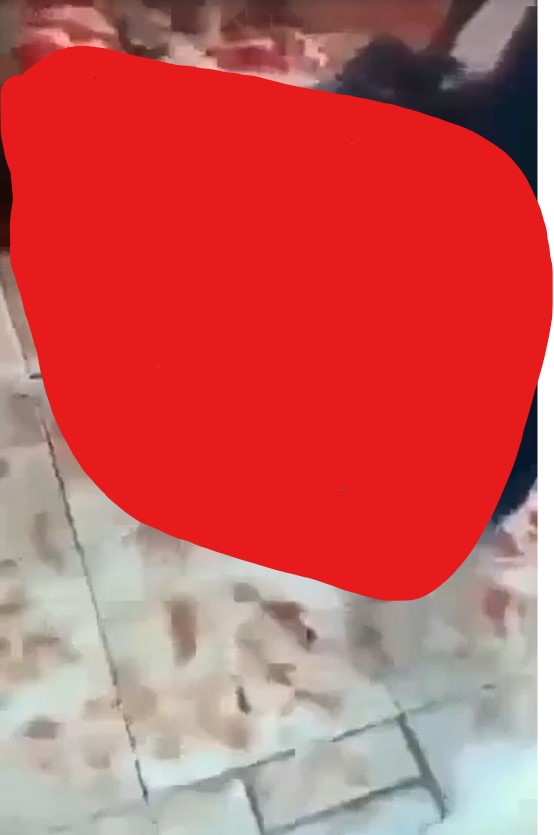"Funkytown" Cartel Video: What You Need To Know - [Warning: Graphic Content]
Can a single video truly encapsulate the depths of human depravity and the chilling reality of cartel violence? The "Funkytown" video, a gruesome piece of online content, serves as a stark testament to the brutality that has become increasingly prevalent in Mexico's drug war, leaving an indelible mark on those who have encountered it.
The internet, a vast and often unregulated landscape, has become a repository for all manner of content, including the most disturbing and graphic. Among this disturbing collection, the "Funkytown" video stands out as a particularly harrowing example. The video, which gained notoriety around 2016, depicts a brutal execution carried out by members of a Mexican cartel. The name "Funkytown" is derived from the song by Lipps Inc. which can be heard playing in the background during the final seconds of the clip, creating a macabre juxtaposition of violence and popular culture.
The video's content is as graphic as it is disturbing, and it is not for the faint of heart. The victim, a man bound and helpless, is subjected to horrific acts of torture. These acts include the cutting of his arms and face, and the eventual slitting of his throat. The details are difficult to process and speak to the extreme nature of the violence inflicted. The purpose, beyond mere cruelty, is to terrorize rivals, the police, and the already terrified populace, underscoring the cartels ruthless pursuit of power.
The disturbing nature of the "Funkytown" video has led many to seek information, albeit cautiously, about its details. While some seek a morbid understanding, others grapple with the emotional impact of such disturbing content, as the video has left deep emotional scars to the viewers.
Please Note: Due to the graphic nature of the "Funkytown" video, this article will not provide a detailed description of the events within the video.
The rise of such videos, and their wide distribution via the internet, highlights the ways the cartels use social media to project power and instill fear. The videos are not merely acts of violence but calculated tools to demoralize their adversaries, intimidate the local population, and discourage interference from law enforcement.
The disturbing trend of sharing and viewing such content raises important questions about the ethical responsibilities of content creators and platforms. It also brings to the forefront the urgent need for more robust measures to combat the spread of violent content and to offer mental health support to those who are affected by it.
The violence depicted in the "Funkytown" video is not an isolated incident. It is a symptom of the ongoing drug war in Mexico, where cartels battle each other for control of territories and resources. The video's existence, circulation, and continued impact underscore the urgent need for solutions. Combating organized crime and fostering a more secure and just society require a multifaceted approach.
The roots of the current conflict are complex, with factors including the economic disparities, political corruption, and demand for illegal substances in other nations. The impact of the drug war extends far beyond those directly involved in the violence. It affects communities throughout the country and also impacts the broader international community.
The history of violence in Mexico is not new, and the brutality of the cartels echoes the violence of the past. The pre-Columbian civilizations also had practices of human sacrifice, including ripping out organs. The arrival of the Spanish and the subsequent exploitation further exacerbated the existing social divisions and power structures. This history, combined with factors such as poverty, corruption, and the allure of quick wealth, created an environment where organized crime could flourish.
The "Funkytown" video serves as a chilling reminder of the ongoing crisis. It is not just a shocking piece of media; it is a reflection of a larger problem, the human cost of the drug war and the urgent need for action.
| Category | Details |
|---|---|
| Video Name | Funkytown |
| Alternate Names | Mexico Funkytown, Funkytown Cartel Video |
| Description | Graphic video depicting torture and murder by a Mexican drug cartel. |
| Year of Circulation | 2016 (estimated) |
| Location | Mexico |
| Perpetrators | Members of a Mexican Drug Cartel (Identity not confirmed) |
| Victim(s) | Unidentified man |
| Actions Depicted | Torture (cutting of limbs, face), throat slitting |
| Motivations (speculated) | Intimidation of rivals, law enforcement, and the public; demonstration of power |
| Methods of Distribution | Social media, internet forums, dark web |
| Impact | Psychological distress, fear, normalization of violence, ethical concerns about content distribution |
| Associated Themes | Cartel violence, drug war, brutality, torture, gore, online content, crime, social media |
| Cultural References | The song "Funkytown" by Lipps Inc. |
| Current Status | Still circulating online, though often removed from mainstream platforms |
| Reference | Mexican Drug War - Wikipedia |
The motivations behind such acts are complex. While the specific motives in the "Funkytown" case are not fully known, the use of graphic violence serves several purposes for cartels. These purposes include intimidation, deterrence, and the maintenance of control. By disseminating such content, cartels send a clear message to their rivals, the government, and the public that they will stop at nothing to achieve their goals and that there is no protection. The violence is a show of power and a threat.
The spread of "Funkytown" and similar videos underscores the challenge of policing the internet. The anonymity of the internet, the ease with which content can be shared, and the global nature of the network create formidable obstacles. While platforms are attempting to remove such content, the videos persist, making this an ongoing struggle.
In the context of the "Funkytown" video, the actions are particularly horrific, given the context of Mexicos long history of violence. This history includes not only the current drug war but also periods of political instability and social unrest. When the Spanish arrived in South America, they found societies that were not peaceful, with civilizations like the Aztecs practicing human sacrifice. The brutal methods of the cartels, therefore, reflect not just their ruthlessness but also a deeper history of violence.
The response to such content requires a multifaceted approach, including:
- Content Moderation: The use of effective AI and human moderators to identify and remove violent content.
- Collaboration: Collaboration between law enforcement agencies and tech companies to track down the sources of violent content and bring those responsible to justice.
- Mental Health Support: The provision of mental health services to help people cope with the trauma of seeing or being exposed to violent content.
- Public Awareness: Education about the dangers of violent content and how to avoid it.
The "Funkytown" video and other similar videos are a harsh reality, a sign of the complex and disturbing nature of the modern world. They are a reminder of the importance of a comprehensive response to the threats of violence.



Detail Author:
- Name : Ms. Lupe Larson
- Email : peyton67@hyatt.com
- Birthdate : 1995-02-17
- Address : 820 Evie Route Suite 861 Tianafurt, NH 72736
- Phone : (662) 351-5960
- Company : Quigley, Feest and Donnelly
- Job : Loan Counselor
- Bio : Ab repudiandae est et iusto eum dicta. Totam voluptatem aut sequi quisquam dolores sint et. Ea consequatur dolore temporibus ducimus dolores natus qui.